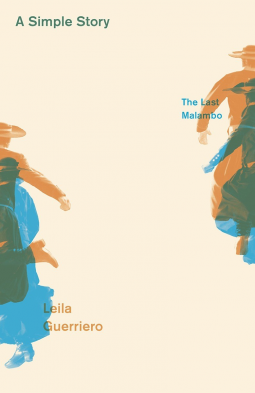
A Simple Story
The Last Malambo
by Leila Guerriero
This title was previously available on NetGalley and is now archived.
Send NetGalley books directly to your Kindle or Kindle app
1
To read on a Kindle or Kindle app, please add kindle@netgalley.com as an approved email address to receive files in your Amazon account. Click here for step-by-step instructions.
2
Also find your Kindle email address within your Amazon account, and enter it here.
Pub Date Feb 07 2017 | Archive Date Dec 31 2016
Description
Advance Praise
“A Simple Story is about an expression of a culture that, unlike tango, has been passed over, neglected or forgotten by all but a few devotees, for whom it is an obsession. Its obscurity, this book suggests, is its salvation.” - The Economist
“An epic of noble proportions—Guerriero is a mistress of the telling phrase or the revealing detail.” - Sarah Crompton, The Spectator
Available Editions
| EDITION | Other Format |
| ISBN | 9780811226004 |
| PRICE | $14.95 (USD) |
Links
Average rating from 2 members
Featured Reviews
 Sarah-Hope P, Educator
Sarah-Hope P, Educator
One of the pleasures of good nonfiction is that it can introduce you to a topic you know nothing about, one you wouldn’t expect to be interested in—and it can pull you in and make fascinating what originally seemed obscure. Leila Guerriero’s A Simple Story is exactly this kind of nonfiction.
Guerriero’s focus is on particular competitor in a little-known Argentinian folk dance competition: the Malambo Competition held annually in the village of Laborde. While Argentina has any number of folk dance competitions, Guerriero tells us “The uncompromising spirit and faithfulness to tradition is probably what makes [the Laborde competition] the least-known festival in Argentina.” For U.S. readers, the most familiar form of Argentinian dance is likely the tango, and the most familiar form of this most familiar form is the kind of “show dancing” exhibited by touring companies and in ballroom dance competitions. Malambo is nothing like this.
Malambo still largely remains true to the gaucho tradition from which it arose. It is a grueling dance form combining remarkably fast legwork with a nearly motionless upper body and a face devoid of emotion beyond a stoic ferocity. While the shoulders face forward, the lower half of the body turns left and right—a pivot a bit like an inversion of an owl’s spinning head. Dancing the Malambo is not just a matter of artistry, but also of endurance. At the Laborde competition, dance performances require close to five minutes of nonstop action. The best comparison I can come up with for the demands of the Malambo form (though this would seem like a stretch to real Malambo enthusiasts) is synchronized swimming. Think of the muscle control, the range and speed of movement required—and all of this done while underwater with limited opportunities for breathing. Malambo, of course, is not an underwater art form, but it demands remarkable lung capacity and breath control. A true Malambo artist breathes only through the nose, never gasping or taking visible breaths. In fact, to dance Malambo is to court hypoxia.
Even if you can’t imagine yourself enjoying a book about folk dance, pick up A Simple Story and give it a try. Chances are, you’ll experience what I did—an obsessive need to keep reading and a burning hunger to witness the Malambo for yourself.



